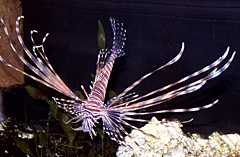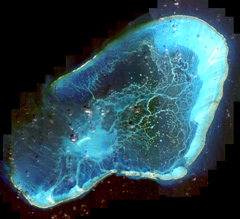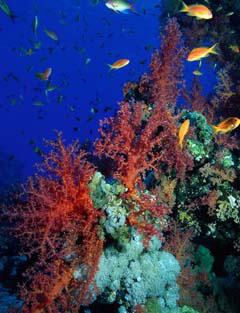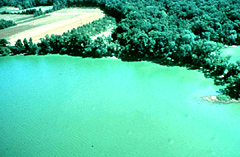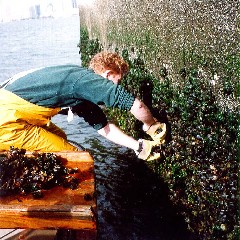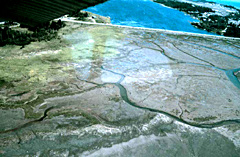|
|
An ecosystem is an ecological community comprised of biological, physical, and chemical components, considered as a unit. Coastal ecosystem science is the study of inter-relationships among the living organisms, physical features, bio-chemical processes, natural phenomena, and human activities in coastal ecological communities. At NOAA's National Ocean Service (NOS), coastal ecosystem science centers on the study of five categories of ecosystem stressors:
Six laws and one executive order authorize most of NOS coastal ecosystem science activities. They are the (1) Estuary Restoration Act; (2) Harmful Algal Bloom and Hypoxia Research and Control Act of 1998; (3) Nonindigenous Aquatic Nuisance Prevention and Control Act of 1990; (4) National Invasive Species Act of 1996; (5) National Coastal Monitoring Act; (6) National Marine Sanctuaries Act; and (7) Coral Reef Protection Executive Order.
NOS uses research, monitoring and assessments to better understand and apply its knowledge of stress factors on coastal ecosystems. The programs and projects that support this effort are lengthy. They span from broad ecosystem-wide and watershed-scale to microbiological and analytical chemistry projects that delve into DNA analysis and bio-chemical reactions. To synthesize the array of many science investigations on an ecosystem scale, NOS develops integrated assessments. These describe the ecosystem, assess its current condition or health, forecast future ecological health based on current management, and evaluate alternative management options and their consequences. For NOS, understanding the ecological effects of environmental stressors is a priority in those ecosystems and those areas where responsibilities are mandated by legislation or executive order. These include coral reef ecosystems, the nation's estuaries, 13 national marine sanctuaries, 27 national estuarine research reserves (NERRS), and ocean ecosystems. The focus of NOS coastal ecosystem science is summarized below.
Coral Reefs NOS coastal ecosystem science works to understand the extent of and reasons for the decline of coral reefs and to provide managers with more effective ways to protect them. Research projects examine interactions between natural factors, human activities and coral health. Some specific projects include:
Estuaries
The NOS approach to estuary research is to produce information that increases understanding of these complex coastal systems and improves the ability to protect and restore habitats within them. Estuary research is grouped into four categories:
National Marine Sanctuaries Within the nation's marine sanctuaries, NOS coastal ecosystem science aims to develop integrated assessments in support of the national marine sanctuary science plan. Top priorities of the plan are the need to understand (1) the status and trends of sanctuary resources on local, regional, and national scales; (2) the nature, level, and trends of human uses within each sanctuary; and (3) the nationally significant themes at the sanctuary level such as essential habitat identification, biodiversity, and conservation. Some projects include:
National Estuarine Research Reserves
The goal of NOS ecosystem science at NERRS sites is to support research and management efforts at each reserve. Some projects include:
Oceans and Coastal Waters The coastal ocean encompasses a broad range of saltwater ecosystems, including estuaries, coral reefs, rocky shores, gravel shores, sandy shores, mud flats, marshes and mangrove forests. These ecosystems exist where streams and rivers meet the sea and where tides and coastal currents mix. NOS works to understand and anticipate changes in coastal ecosystems as they become stressed. Example projects include:
|
Educational ResourcesLionfish Invasion! Discovery Story
Lionfish Established in Atlantic: Summer 2004 Unravelling Dolphin Entanglement Deaths: Spring 2004 Asian Oyster Under Scrutiny for Chesapeake Bay: Spring 2004
|
||||||||||||||||||||||||||||||||||||||
- NOS Program Offices
- Center for Operational Oceanographic Products and Services
- National Centers for Coastal Ocean Science
- NOAA Coastal Services Center
- National Geodetic Survey
- Office of Coast Survey
- Office of National Marine Sanctuaries
- Office of Ocean and Coastal Resource Management
- Office of Response and Restoration

Revised August 18, 2008
| Questions, Comments? Contact Us | Report
Error | Disclaimer | About
the Site | User Survey
National Oceanic and Atmospheric
Administration | U.S.
Department of Commerce | USA.gov
http://oceanservice.noaa.gov/topics/coasts/ecoscience/welcome.html

